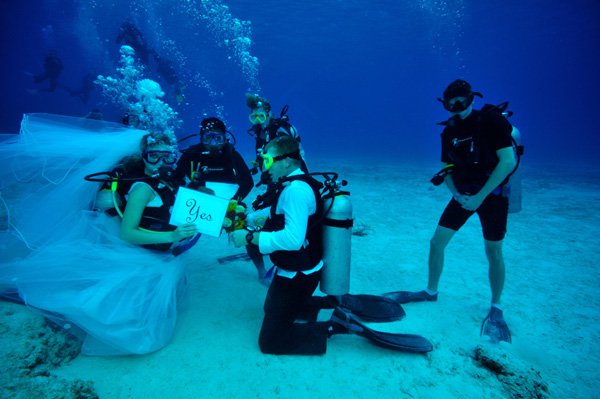live baiting
Question
Jack Mackerel
Trachurus symmetricus
Mackerel Jack
Description To 32" (81 cm). Fusiform, compressed; metallic blue to olive-green above; silvery below, but darkens with age. Pectoral fin extends to base of first soft ray in anal fin. Dorsal fins barely separated; no dorsal and anal finlets. Lateral line has 40-55 bony shields posteriorly and a dorsal branch.
Related Species Mexican Scad (Decapterus scombrinus) has single dorsal and ventral finlets; lateral line lacks dorsal branch, has bony shields only on rear part; occurs in similar habitat from Pacific Grove, California, to Galapagos Islands.
Similar Species Chub Mackerel (Scomber japonicus) has dark blue back with wavy lines, 4-6 dorsal and anal finlets.
Habitat Offshore on surface and at midwater; around reefs and kelp beds.
Range From SE. Alaska to Galapagos Islands, And south west Pacific
For picture see http://www.velafishing.co.nz/species/jackmackerel.html
Answer
Hello Ryan,
Thanks for the additional information reguarding the "Jack" Mackerel of New Zealand/ South Western Pacific. You also included a description of the species that is common on the western coast of the U.S.
The common name used by most of the anglers here is also Jack Mackerel and in the anglers vernacular, "brown backs". Ironically, we love to use them for the "Kings" here, known as Yellowtail. The variation you have off of New Zealand has, as you know, proven to be exceptional bait for the Yellowtail.
I have opted to attempt to answer the question here on the site so that others may view it if they so choose.
If Trachurus is like Decapterus Scombrinus, it is not quite as hardy as the pacific Blue Mackerel that we more often use here, but the techniques are equally useful.
While the techniques used for taking the Yellowtail are many and varied, I will describe the three most common I use.
1- Dropper-Loop: this technique is exceptional for deep water fishing on reefs, wrecks and any other submarine structure such as dropoffs, rockpiles or pinnacles. It is typically rigged on your main line. You will require your hook of choice and a torpedo style ringed sinker or weight. Whatever hook you decide upon; siwash, circle, shortshank live bait or other, ensure that it is superbly sharp.
Start by running your hook up your main line. The line should be heavy for this technique due to the Yellow's ability to use the structure to break it and escape. Most use monofilament in the 50 to 100lb test range.
Now that the hook is up the line, form a large 16 to 36" loop with the hook suspended freely on the line of the loop leaving a tag end from the size of the loop you choose to double or triple the length of the loop as a tag end. With the hook sliding freely on the loop of line, tie a spiderhitch to form and secure the loop. Use at least six wraps on the spiderhitch.
Now simply attach the proper sized torpedo sinker for the depth and current in the area, nose hook the mackerel. You can hook it across the nose approximately 1/2" from the apex ( most durable but a bit more difficult to hook the Yellowtail) or up through the roof of the mouth about the same distance from the apex of the fishes nose. This technique allows for an easier hookset as the hook tears through the nose vertically more efficiently.
2- The slider Rig- You will need the hook of choice as discussed previously, matched to the bait and a sliding sinker...also known as an egg sinker. It is egg shaped and has a hole through the center.
Tie the hook to your line ( test here is your choice...this rig is very popular with both the Jack Mackerel and many other baits like smaller mackerel, sardines, anchovies and live squid). The size of the weight should be determined by your needs with reguard to depth and current as well as the bait size. It is rigged ver, very simply: just slide the weight up the line, tie on the hook of your choice...( I prefer the clinch, double improved clinch or the Palomar knot for this application), then hook your bait, allowing the weight to rest against the hook, sliding freely on the line. This allows the weight to slide away from the fish preventing the leverage from occuring while the fish shakes its head or in rare cases slashes his head above water during landing enabling the hook to be thrown.
3- "Fly-Lining"- This is a very effective technique if the fish are near the surface or in water less than thirty feet deep with good clairity. Once again choose your favorite hook. Tie the hook with any of the previously mentioned knots (less the spiderhitch) or beter yet, the perfection loop. THis loop knot allows the hook to swing freely on the loop (which is very small) and also allows the bait to swim and change direction far more naturally. The bait is cast and allowed to swim somewhat freely around the area in which you have located fish.
With all of the techniques mentioned, you must remember you are fishing with a large bait when using the Jack Mackerel. The larger the bait, the more time the fish will need to swallow the bait. THe nose hooking method is most desireable due to the nature by which most fish take another...by the head. This places the hook in the mouth first. But remember that the Kings ( Yellowtail) may take the bait from the mid section and then turn the bait during the first take ( slowing slightly after the take) or head first on the initial strike. THe Kings will OFTEN move away from a school of competitors before it attempts to reposition for swallowing...be patient but experiment with hook-set timing.
Ryan , I hope you find this information helpful. I assure you the efficiency of the techniques is very high and will result in good catches and tremendous fun for you, your friends and perhaps, your clients.
Thanks for the question-
Mark Rimmer- AllExperts.com
lure size
What kind of reel and rod should I use.


